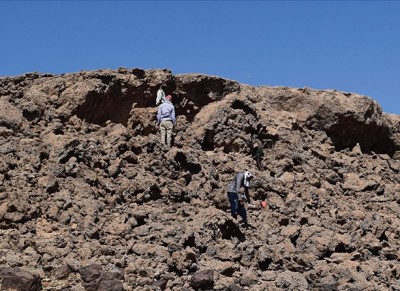Archaeological reconnaissance of the Late Pleistocene Red Sea coast in the Danakil
Abstract

The paucity of archaeological evidence from the northern Afar Rift and Red Sea littoral remains a major hindrance to testing the hypothesised Out-of-Africa dispersal of early humans via the 'Southern Route'—across the Bab al-Mandeb into Arabia and beyond. Encouraged by renewed geological studies (e.g. Atnafu et al. 2015), and recent archaeological discoveries (e.g. Walter et al. 2000; Beyin 2013), we initiated a pioneering exploration along the ancient Red Sea coast in the Danakil Depression. The most conspicuous geomorphological features here constitute terraces of reef carbonates and associated marine deposits, formed when the depression was covered by the open Red Sea during the Middle to Late Pleistocene. Initial results of our exploration promise contexts in which the distribution and cultural/behavioural adaptation of early humans during the Out-of-Africa event can be closely investigated.
Authors
- Amanuel Beyin
Department of Anthropology, University of Louisville, Louisville, KY 40292, USA (Email: amanuel.beyin@louisville.edu) - Yonatan Sahle
DFG Center for Advanced Studies, University of Tübingen, 72070 Tübingen, Germany (Email: yonatan.sahle@ifu.uni-tuebingen.de)

 Cite this article
Cite this article